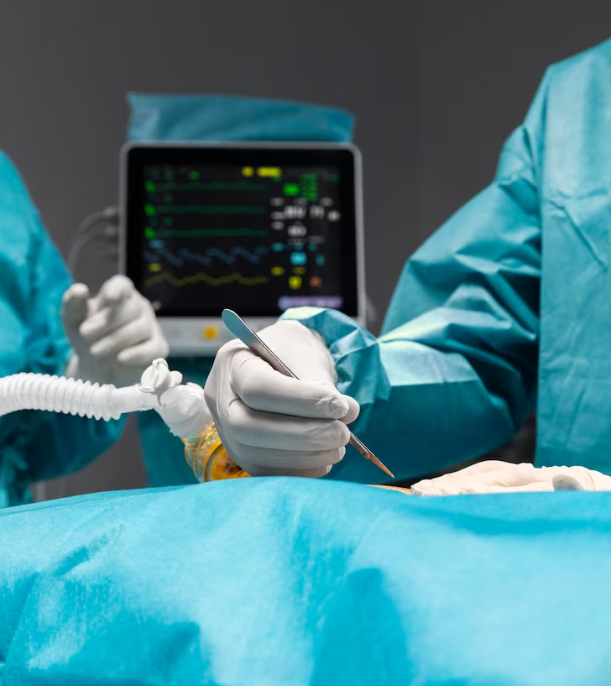Pediatric Liver Transplants
Pediatric Liver Transplants
- A procedure that provides a donated liver to a child with a life-threatening liver disease
- Used to treat serious liver injury in children
- The most common reason for a pediatric liver transplant is biliary atresia
- Involves Liver Transplant Program, Pediatrics, Transplant & Immunology
A well-functioning liver is essential to life. The liver, a large organ situated on the right side of the abdomen, has vitally important jobs, including filtering and removing toxins from the blood, producing substances that help blood clot, and producing bile, which helps to digest fats, carbohydrates, and proteins. If a child’s liver is injured and can no longer perform these functions, it may need to be replaced with a healthy liver (or a portion of one). Fortunately, pediatric liver transplants can be performed safely. Successful transplantation is a lifesaving operation that can cure many cases of childhood liver failure.


Why do children need liver transplants?
The most common reason for a pediatric liver transplant is biliary atresia, which is a rare disease affecting 1 in 10,000 to 1 in 20,000 live births worldwide. Inflammation occurs around a child’s bile ducts — which usually allow digestive liquid to drain into the intestines — and the ducts become blocked. The liver becomes scarred and damaged when it cannot get rid of this fluid.
Biliary atresia is usually diagnosed when a child is about 5 to 6 weeks old. Doctors aren’t sure what causes biliary atresia or whether it begins before or after birth.
Other types of liver disease in children include inherited genetic, metabolic, and autoimmune disorders like autoimmune hepatitis.
Children of any age can also experience sudden liver failure from several different causes. Despite numerous tests, however, doctors are sometimes unable to determine why children experience liver failure.
How are children prepared for a liver transplant?
Liver disease is usually diagnosed through a series of blood tests, imaging tests, and a biopsy of the liver. Once doctors determine that a liver is failing and needs to be replaced, the child is referred to a transplant team.
At Yale Medicine, our transplant team consists of hepatologists, transplant surgeons, nurses, transplant pharmacists, dieticians, social workers, as well as cardiologists and infectious disease doctors. The transplant team will assess the patient to ensure they are healthy enough to handle the transplant.
The child’s family also meets with a social worker, who makes sure that they understand the care that will be needed after surgery.
The child is then put on a waiting list for a liver from a deceased donor. The waiting time for a liver varies, and a child’s place on the list is determined largely by how sick the child is and how urgently a new liver is needed.
Yale Medicine also offers living donor transplantation, and family members or others close to the child can be evaluated as potential donors. This can significantly shorten the patient’s wait time for a new liver.
If a living donor has been identified, a date is then set for the surgery. Otherwise, the family waits for a phone call that a deceased donor organ is available. During this waiting period, the child will be given medicine and nutritional support until a transplant is possible.


How is a pediatric liver transplant performed?
When a donor liver becomes available, the patient and the transplant team meet at the hospital for final tests. Once the patient is cleared for surgery, the transplant is performed as soon as possible.
The patient is put to sleep using general anesthesia, and an incision is made across the abdomen. The damaged liver is disconnected from the blood supply and gastrointestinal tract, removed from the body, and replaced with the new one. Blood vessels and bile ducts are reattached, so that blood and bile flow are restored through the new liver. The incision is then closed and stapled or stitched up.
Because children are smaller than adults, they usually only need a small portion of a donor liver, which quickly grows into a fully working organ. Similarly, since children need smaller portions of donated livers, adult-to-child living donations can be successful and safe for the donor.
After surgery, transplant patients stay in the hospital for about two weeks. They spend the first few days in the pediatric intensive care unit, where nurses and doctors can closely monitor their liver function and vital signs. Then they are moved to the general pediatric ward for the remainder of their stay.
For the first few days, patients receive nutrients intravenously. After a few days, they can begin drinking and eating solid food. The incision typically heals quickly, although a tube may be attached to the wound for a few days to drain away fluid.
Doctors will prescribe drugs to help manage pain after surgery, as well as medicines that help to prevent infection and facilitate the body’s acceptance of its new organ.
What happens after a pediatric liver transplant?
Liver transplant recipients usually need weekly check-ups for the first few months after surgery. The appointments then become more spread out – once a month and eventually just once or twice a year.
Doctors also use these check-ups to make sure that the liver is working well and patients are taking their medications. People who receive a liver transplant have to take several drugs every day for the rest of their lives to prevent their bodies from rejecting the organ.
Parents need to make sure that their children stick to this regimen, especially during big life changes, such as going away to college as a teenager, or switching doctors or insurance plans. Patients or their parents should call their doctor if their medication ever gets off schedule because a single missed dose can put transplant recipients at risk for a rejection episode, which may lead to organ failure and the need for another transplant.

Why Choose Us
Complete Liver & Cancer Care Solutions For All
ExperienceTeam
+15 Yrs Experience
Standards Treatments
Best Departments
Get Appointment

